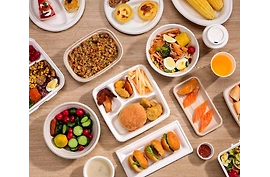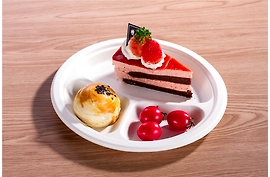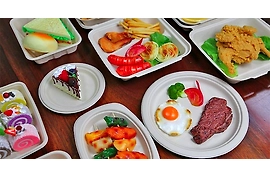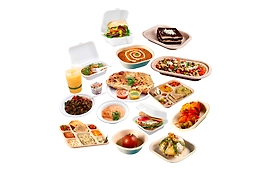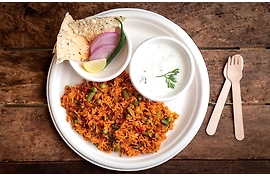Embracing Sustainability: The Rise of Eco-Friendly Bagasse Tableware
| 19 Aug 2023
Introduction
In our modern world, where environmental consciousness is on the rise, individuals, businesses, and industries are continually seeking sustainable alternatives to reduce their carbon footprint. One such commendable stride towards sustainability is the emergence of eco-friendly bagasse tableware. Derived from sugarcane waste, bagasse tableware is revolutionizing the dining experience by offering a greener and more responsible alternative to traditional single-use plastics and styrofoam. This blog delves into the world of bagasse tableware, exploring its benefits, production process, and the positive impact it brings to our planet.
Understanding Bagasse: A Resourceful Byproduct
Bagasse is the fibrous residue left behind after sugarcane stalks are crushed to extract the juice for sugar production. Traditionally, bagasse was considered waste and often burned, releasing harmful pollutants into the environment. However, innovative minds saw the potential in this byproduct and found ways to repurpose it into something valuable – biodegradable tableware.
The Manufacturing Process
The production of bagasse tableware involves several steps that emphasize minimal environmental impact:
-
Collection and Cleaning: Sugarcane mills collect and store bagasse, which is then thoroughly cleaned to remove impurities.
-
Pulping: The cleaned bagasse is pulped using water to break down the fibers into a fine pulp.
-
Shaping: The pulp is shaped into various tableware items using molds and heat. These items include plates, bowls, trays, and cutlery.
-
Drying and Pressing: The shaped products are dried and pressed to achieve the desired form and strength.
-
Finishing: The tableware is trimmed, polished, and sometimes coated with a food-safe protective layer.
-
Packaging: The finished products are packaged and ready for distribution.
Benefits of Bagasse Tableware
-
Biodegradability: Bagasse tableware is completely biodegradable and compostable, breaking down naturally within a few months. This is a stark contrast to plastic, which can take hundreds of years to decompose.
-
Reduced Carbon Footprint: Since bagasse is a byproduct of the sugarcane industry, using it for tableware reduces waste and decreases the need for additional resource extraction.
-
Renewable Resource: Sugarcane is a rapidly renewable resource, making bagasse a sustainable material choice.
-
No Chemical Additives: Bagasse tableware is usually produced without the use of harmful chemicals, making it a safer option for both the environment and human health.
-
Versatility: Bagasse tableware is sturdy, microwave-safe, and can hold both hot and cold food items without compromising its structural integrity.
-
Positive Influence: The adoption of bagasse tableware sends a strong message about environmental responsibility, encouraging others to make sustainable choices as well.
Impact on Our Planet
The impact of bagasse tableware on the environment is significant:
-
Reduced Plastic Pollution: By replacing single-use plastics with bagasse tableware, we reduce the volume of plastic waste that ends up in landfills and oceans, harming marine life and ecosystems.
-
Conserved Resources: Utilizing bagasse prevents the need for additional deforestation and resource extraction for paper or plastic production.
-
Soil Enrichment: Composting bagasse tableware enriches the soil with organic matter, enhancing its fertility and structure.
-
Lower Carbon Emissions: The production of bagasse tableware generally results in fewer carbon emissions compared to traditional plastics and styrofoam.
Conclusion
The rise of eco-friendly bagasse tableware is a testament to human innovation and commitment to a sustainable future. By repurposing a waste product into functional and biodegradable tableware, we're making a positive impact on the environment and inspiring others to follow suit. Embracing bagasse tableware not only enhances the dining experience but also fosters a deeper connection to the planet, as we actively choose alternatives that nurture rather than harm our natural world. As consumers, businesses, and society as a whole, we hold the power to shape a greener and more sustainable future, one plate at a time.

